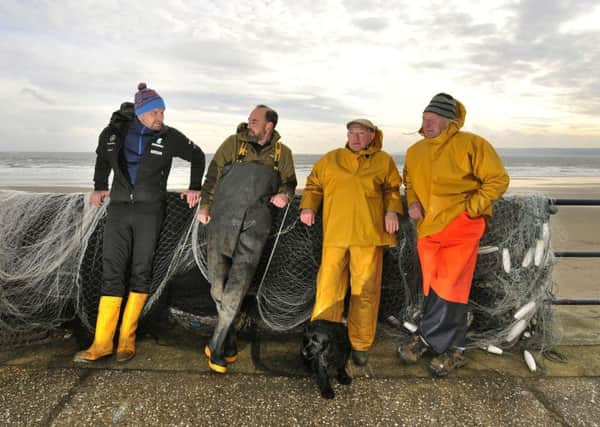Why Filey's fishermen fear they may be the last generation to cast their nets


Standing on the cliffs above Filey Brigg and looking across the dramatic curve of the bay towards Flamborough Head, the small area of sea below me looks every bit the picturesque and tranquil image that has greeted generations of visitors and holidaymakers to this alluring and most genteel North Yorkshire seaside town.
However, beneath the gently lapping waves that perpetually crest up the pristine sands of the beach towards the hauled-up fishing boats lurks a catch, the custody of which, is driving local fishermen to despair.
Advertisement
Hide AdAdvertisement
Hide AdThe fishermen have come under increasing pressure not to catch salmon, a wild species that swims with the sea trout and is, at times, unavoidably netted. Having once been a lucrative and seasonal by-catch of the sea trout fishery for these hardy souls, recent changes to their licences will mean that all salmon are now to be released at source and none to be landed.
Lifelong fisherman Rex Harrison explains that this in itself is not a problem for the “Filey Few” as they are not their main quarry and with recent adaptations to their gear, virtually all salmon that end up in their traditional North Yorkshire “J nets” can be released alive unharmed, logged and even tagged, providing a vital snapshot of the population’s health, recorded and relayed to the authorities in real-time data.
It is interesting to note too that the average salmon catch for all the boats for the last ten years amounted to just 157 fish, compared with nearly 5,000 sea trout landed.
“We fish very traditional gear from our small dinghies or cobles, the design of which has not really changed much over the years,” says Harrison. “Also, in order to comply with the terms of our yearly renewable licence, we’re only allowed to fish from Monday to Friday, from April to August, and then only between the hours of 6am and 5pm. The sea trout we’re targeting start running from late April onwards and are our single most important catch. Stock numbers are very healthy and because of improvements in net design, with a bigger mesh size and the way we operate, no juveniles are ever landed and that means true selectivity at source.”
Advertisement
Hide Ad